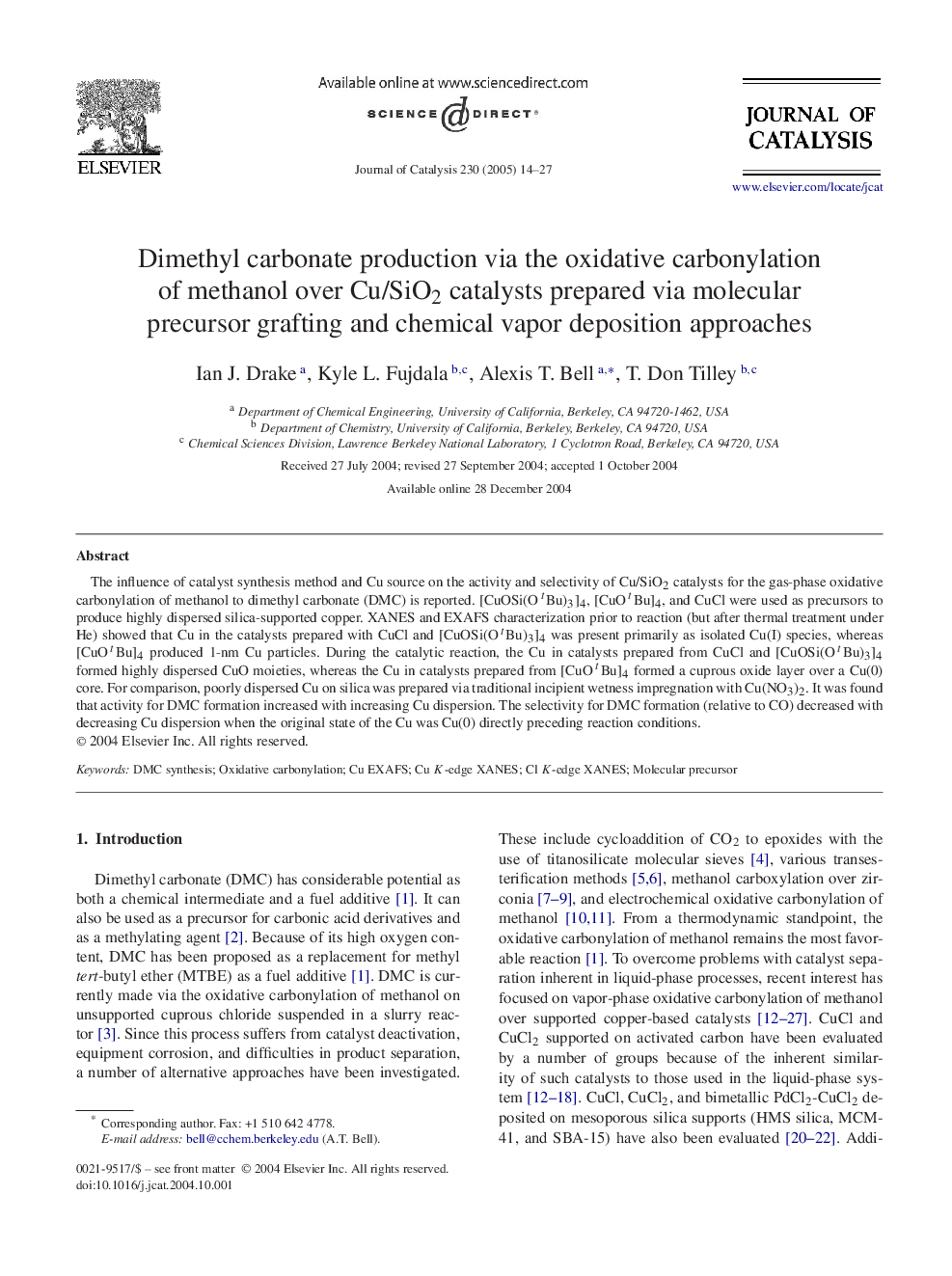| Article ID | Journal | Published Year | Pages | File Type |
|---|---|---|---|---|
| 10244525 | Journal of Catalysis | 2005 | 14 Pages |
Abstract
The influence of catalyst synthesis method and Cu source on the activity and selectivity of Cu/SiO2 catalysts for the gas-phase oxidative carbonylation of methanol to dimethyl carbonate (DMC) is reported. [CuOSi(OâtBu)3]4, [CuOâtBu]4, and CuCl were used as precursors to produce highly dispersed silica-supported copper. XANES and EXAFS characterization prior to reaction (but after thermal treatment under He) showed that Cu in the catalysts prepared with CuCl and [CuOSi(OâtBu)3]4 was present primarily as isolated Cu(I) species, whereas [CuOâtBu]4 produced 1-nm Cu particles. During the catalytic reaction, the Cu in catalysts prepared from CuCl and [CuOSi(OâtBu)3]4 formed highly dispersed CuO moieties, whereas the Cu in catalysts prepared from [CuOâtBu]4 formed a cuprous oxide layer over a Cu(0) core. For comparison, poorly dispersed Cu on silica was prepared via traditional incipient wetness impregnation with Cu(NO3)2. It was found that activity for DMC formation increased with increasing Cu dispersion. The selectivity for DMC formation (relative to CO) decreased with decreasing Cu dispersion when the original state of the Cu was Cu(0) directly preceding reaction conditions.
Related Topics
Physical Sciences and Engineering
Chemical Engineering
Catalysis
Authors
Ian J. Drake, Kyle L. Fujdala, Alexis T. Bell, T. Don Tilley,
